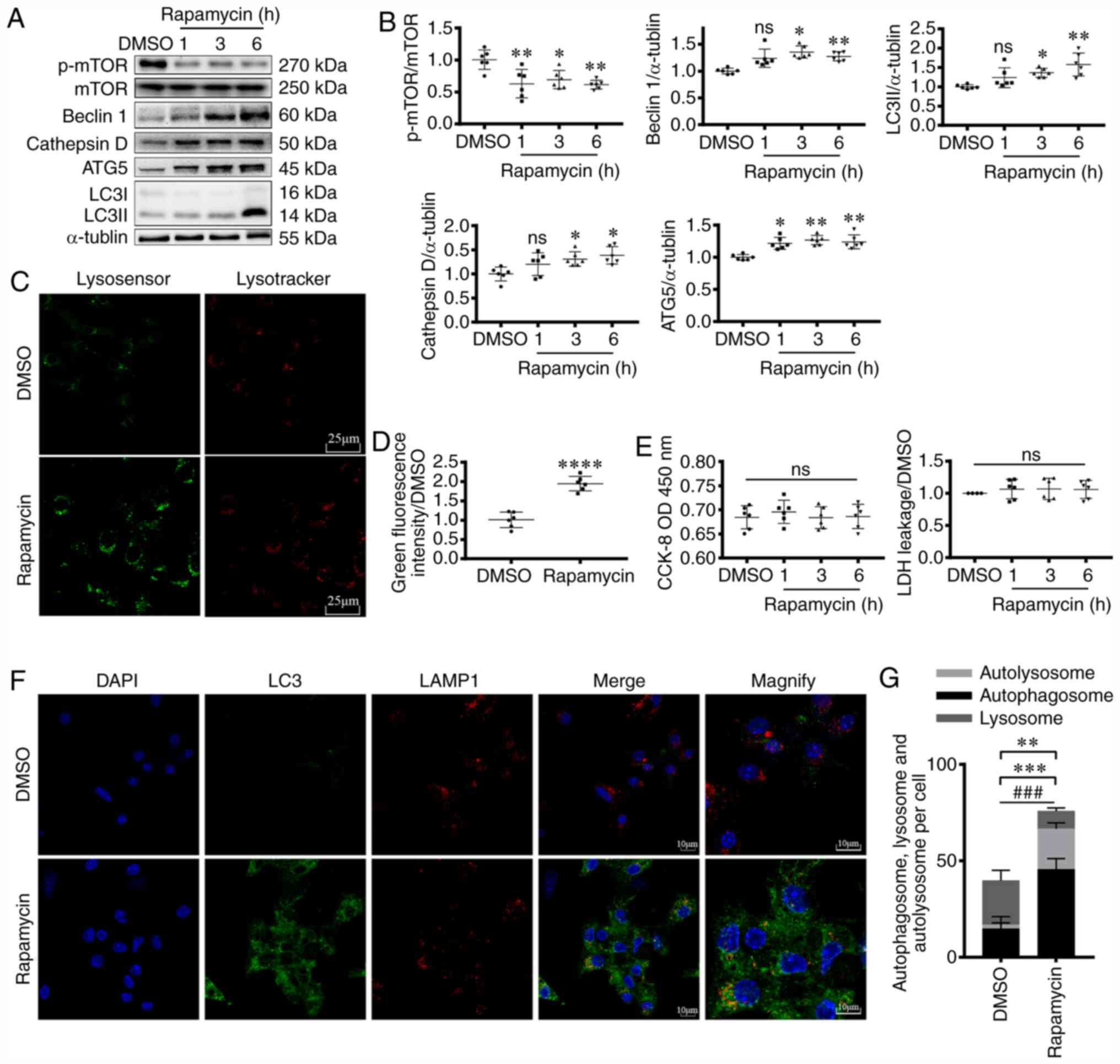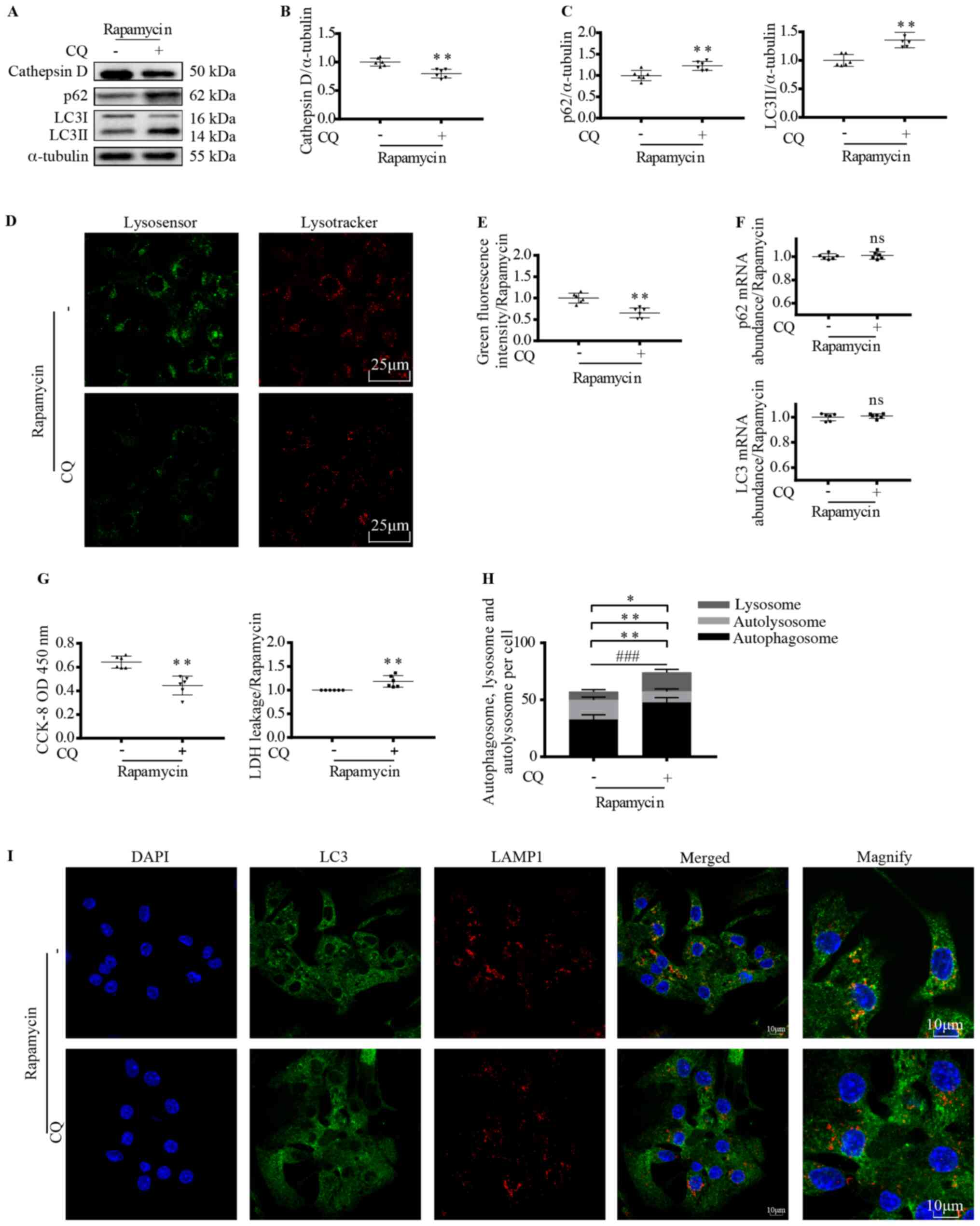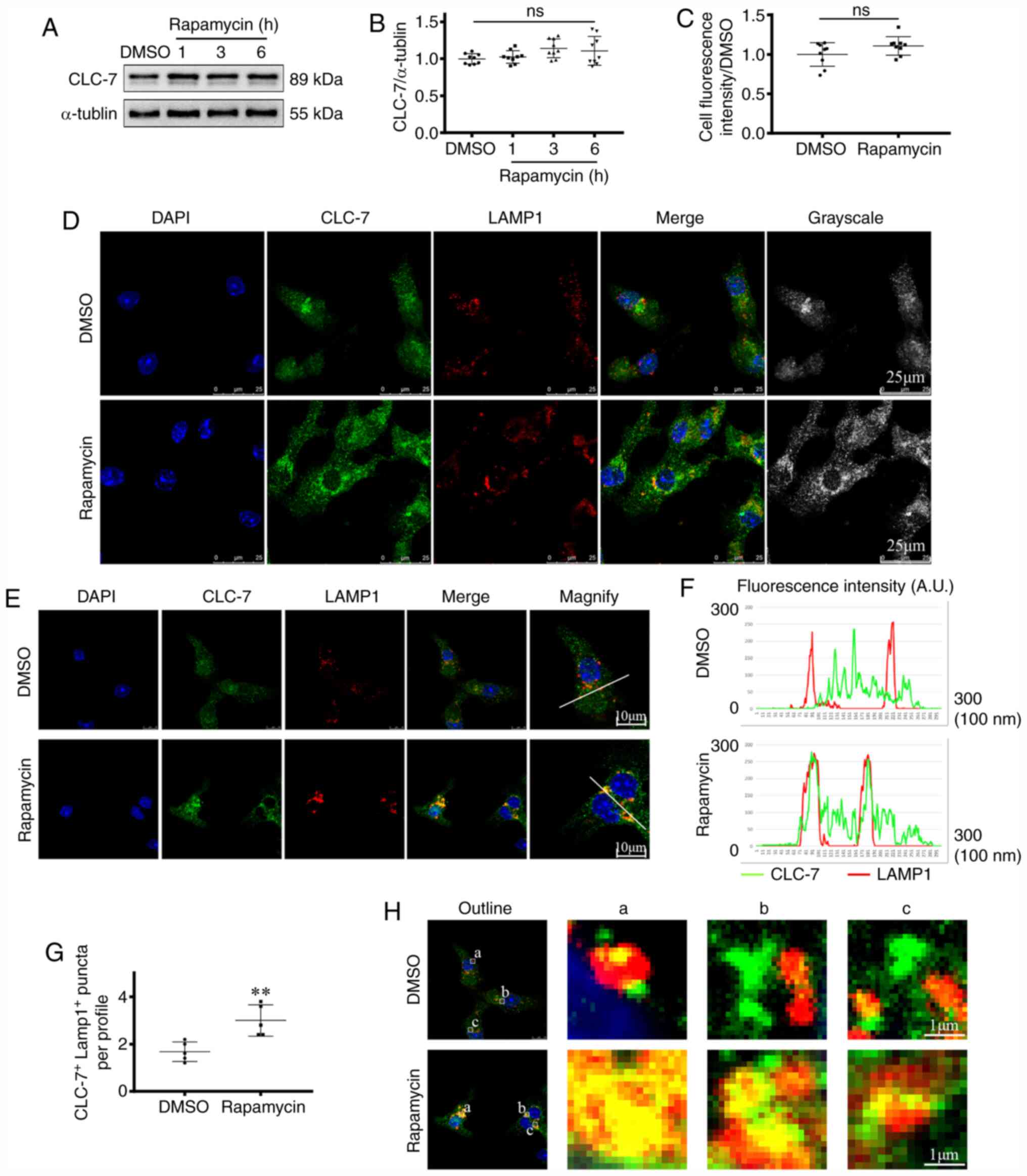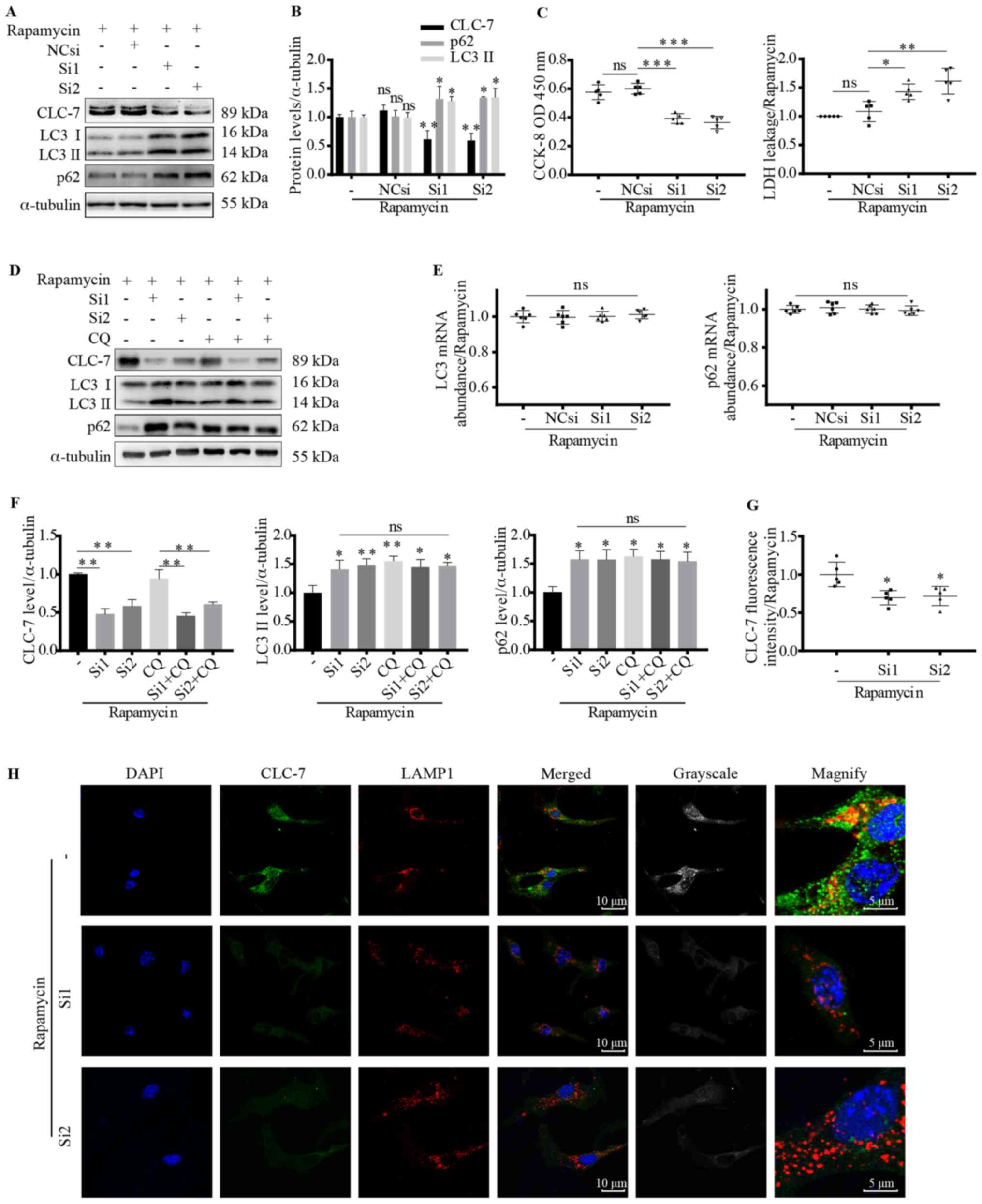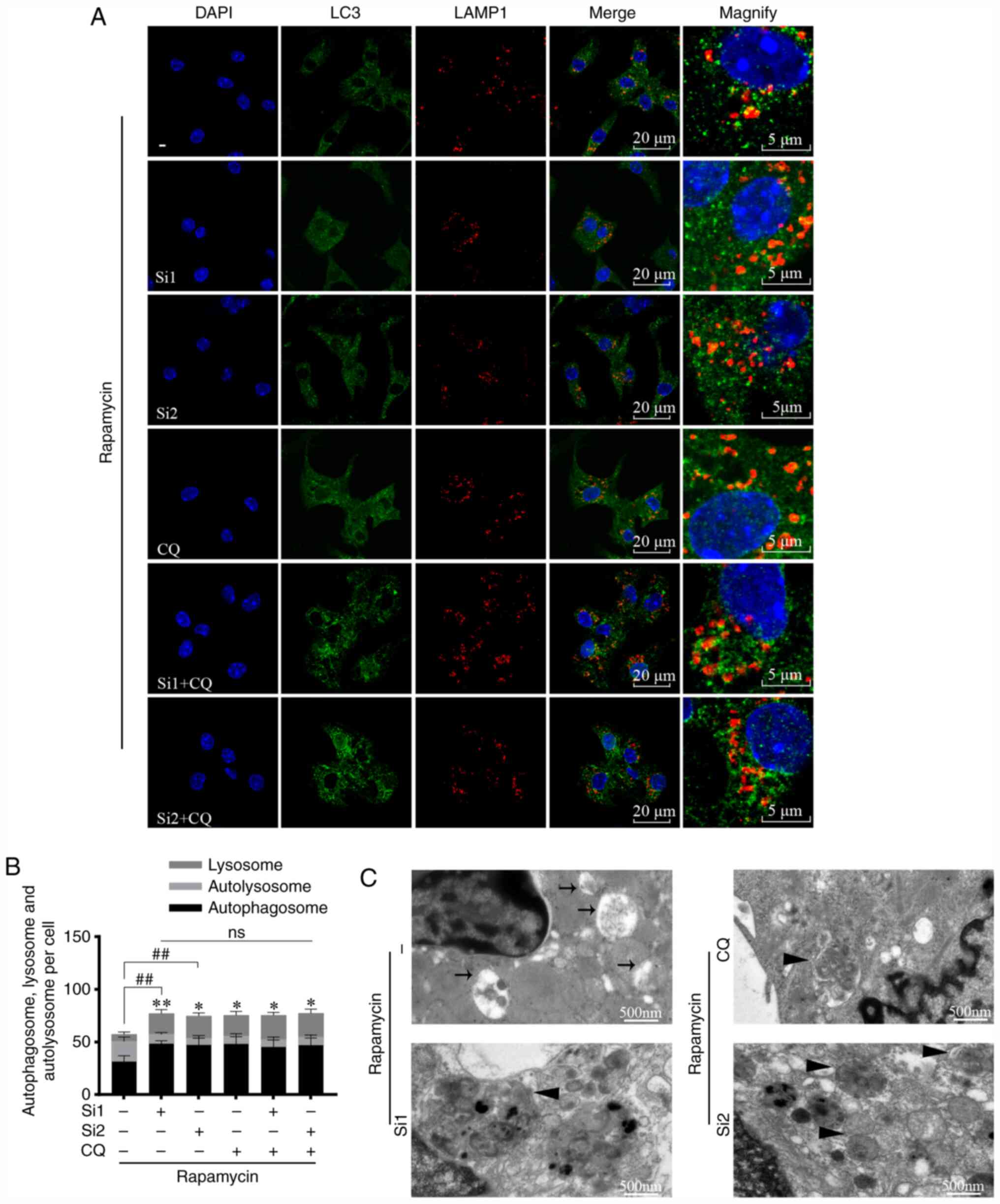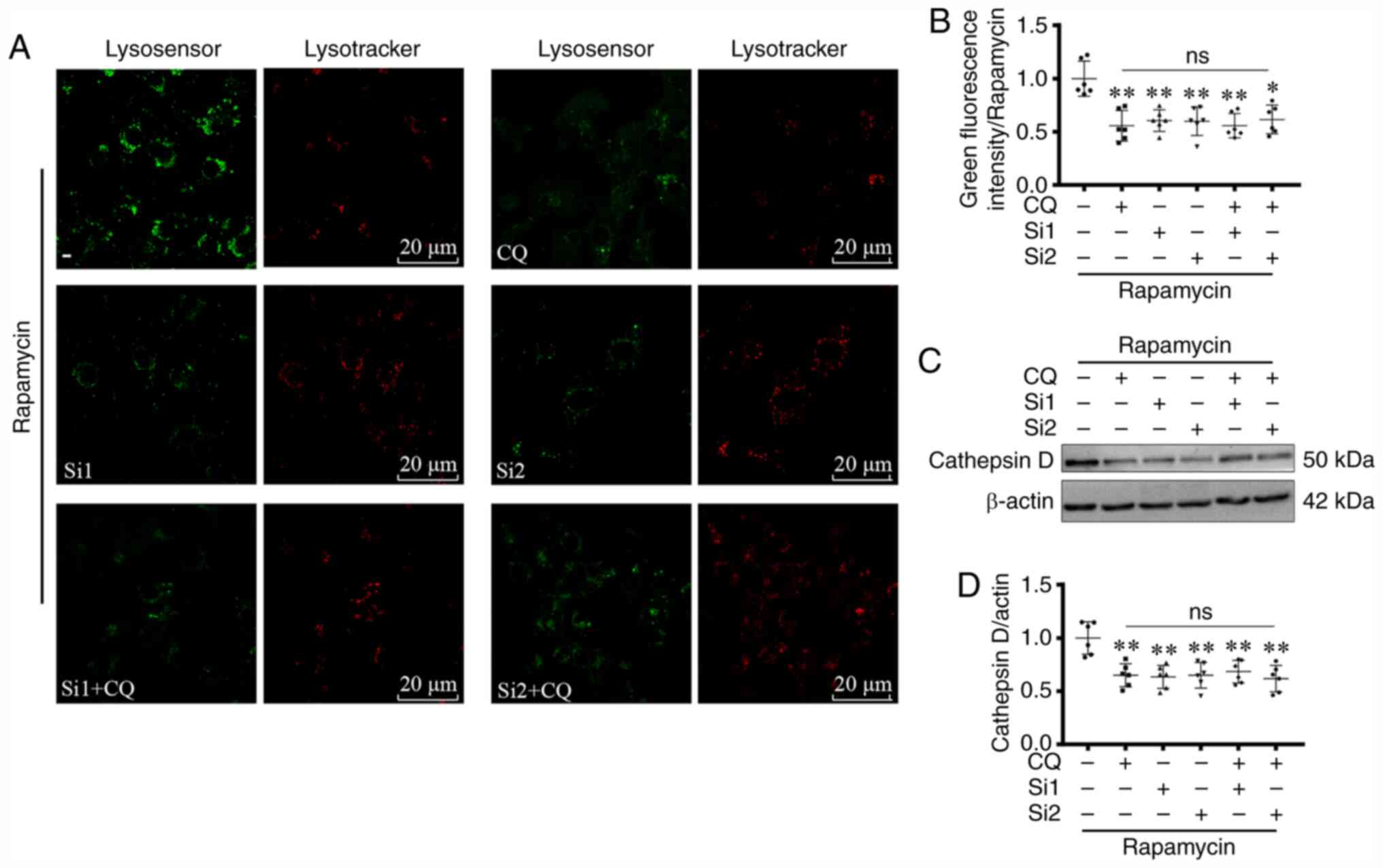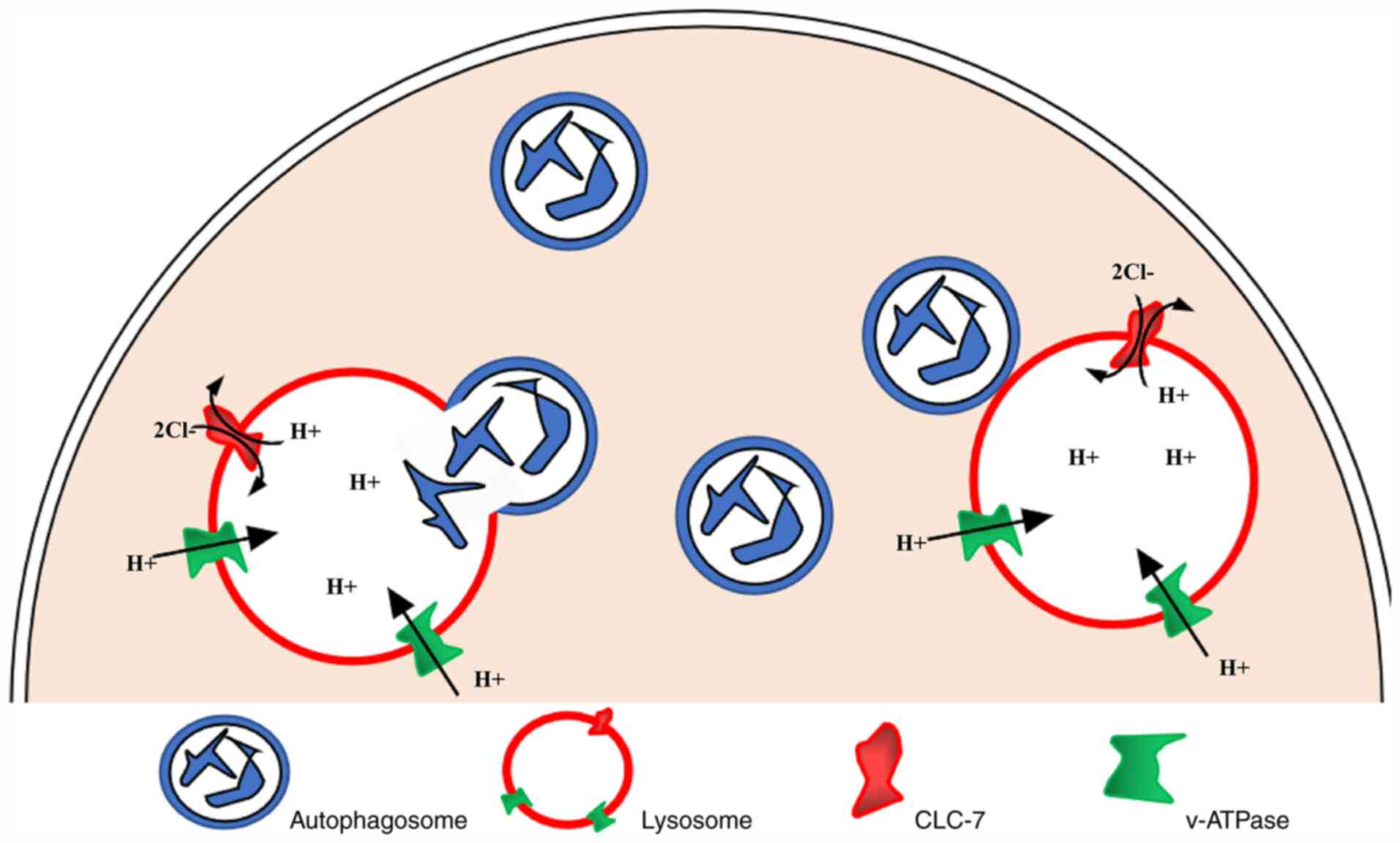|
1
|
Ravanan P, Srikumar IF and Talwar P:
Autophagy: The spotlight for cellular stress responses. Life Sci.
188:53–67. 2017. View Article : Google Scholar : PubMed/NCBI
|
|
2
|
Glick D, Barth S and Macleod KF:
Autophagy: Cellular and molecular mechanisms. J Pathol. 221:3–12.
2010. View Article : Google Scholar : PubMed/NCBI
|
|
3
|
Deng M, Huang L and Zhong X: β-asarone
modulates Beclin1, LC3 and p62 expression to attenuate
Abeta40 and Abeta42 levels in APP/PS1 transgenic mice with
Alzheimer's disease. Mol Med Rep. 21:2095–2102. 2020.PubMed/NCBI
|
|
4
|
Huang YS: Myocardial damage and its
mechanism in burn patients. Zhonghua Zheng Xing Shao Shang Wai Ke
Za Zhi. 9:99–102. 1993.(In Chinese). PubMed/NCBI
|
|
5
|
Li Y, Ge S, Peng Y and Chen X:
Inflammation and cardiac dysfunction during sepsis, muscular
dystrophy, and myocarditis. Burns Trauma. 1:109–121. 2013.
View Article : Google Scholar : PubMed/NCBI
|
|
6
|
Xiao R, Teng M, Zhang Q, Shi XH and Huang
YS: Myocardial autophagy after severe burn in rats. PLoS One.
7:e394882012. View Article : Google Scholar : PubMed/NCBI
|
|
7
|
Matsui Y, Takagi H, Qu X, Abdellatif M,
Sakoda H, Asano T, Levine B and Sadoshima J: Distinct roles of
autophagy in the heart during ischemia and reperfusion: Roles of
AMP-activated protein kinase and Beclin 1 in mediating autophagy.
Circ Res. 100:914–922. 2007. View Article : Google Scholar : PubMed/NCBI
|
|
8
|
Troncoso R, Vicencio JM, Parra V,
Nemchenko A, Kawashima Y, Del Campo A, Toro B, Battiprolu PK,
Aranguiz P, Chiong M, et al: Energy-preserving effects of IGF-1
antagonize starvation-induced cardiac autophagy. Cardiovasc Res.
93:320–329. 2012. View Article : Google Scholar : PubMed/NCBI
|
|
9
|
Yan L, Vatner DE, Kim SJ, Ge H, Masurekar
M, Massover WH, Yang G, Matsui Y, Sadoshima J and Vatner SF:
Autophagy in chronically ischemic myocardium. Proc Natl Acad Sci
USA. 102:13807–13812. 2005. View Article : Google Scholar : PubMed/NCBI
|
|
10
|
Huang YS: Autophagy and hypoxic ischemic
myocardial damage after severe burn. Zhonghua Shao Shang Za Zhi.
34:3–7. 2018.(In Chinese). PubMed/NCBI
|
|
11
|
Marino G, Niso-Santano M, Baehrecke EH and
Kroemer G: Self-consumption: The interplay of autophagy and
apoptosis. Nat Rev Mol Cell Biol. 15:81–94. 2014. View Article : Google Scholar : PubMed/NCBI
|
|
12
|
Oh JM, Choi EK, Carp RI and Kim YS:
Oxidative stress impairs autophagic flux in prion protein-deficient
hippocampal cells. Autophagy. 8:1448–1461. 2012. View Article : Google Scholar : PubMed/NCBI
|
|
13
|
Funakoshi-Hirose I, Aki T, Unuma K,
Funakoshi T, Noritake K and Uemura K: Distinct effects of
methamphetamine on autophagy-lysosome and ubiquitin-proteasome
systems in HL-1 cultured mouse atrial cardiomyocytes. Toxicology.
312:74–82. 2013. View Article : Google Scholar : PubMed/NCBI
|
|
14
|
Gonzalez P, Mader I, Tchoghandjian A,
Enzenmuller S, Cristofanon S, Basit F, Debatin KM and Fulda S:
Impairment of lysosomal integrity by B10, a glycosylated derivative
of betulinic acid, leads to lysosomal cell death and converts
autophagy into a detrimental process. Cell Death Differ.
19:1337–1346. 2012. View Article : Google Scholar : PubMed/NCBI
|
|
15
|
Ma X, Liu H, Foyil SR, Godar RJ,
Weinheimer CJ, Hill JA and Diwan A: Impaired autophagosome
clearance contributes to cardiomyocyte death in
ischemia/reperfusion injury. Circulation. 125:3170–3181. 2012.
View Article : Google Scholar : PubMed/NCBI
|
|
16
|
Mindell JA: Lysosomal acidification
mechanisms. Annu Rev Physiol. 74:69–86. 2012. View Article : Google Scholar : PubMed/NCBI
|
|
17
|
Decker RS and Wildenthal K: Lysosomal
alterations in hypoxic and reoxygenated hearts. I. Ultrastructural
and cytochemical changes. Am J Pathol. 98:425–444. 1980.PubMed/NCBI
|
|
18
|
Weinert S, Jabs S, Supanchart C, Schweizer
M, Gimber N, Richter M, Rademann J, Stauber T, Kornak U and Jentsch
TJ: Lysosomal pathology and osteopetrosis upon loss of H+-driven
lysosomal Cl-accumulation. Science. 328:1401–1403. 2010. View Article : Google Scholar : PubMed/NCBI
|
|
19
|
Ishida Y, Nayak S, Mindell JA and Grabe M:
A model of lysosomal pH regulation. J Gen Physiol. 141:705–720.
2013. View Article : Google Scholar : PubMed/NCBI
|
|
20
|
DiCiccio JE and Steinberg BE: Lysosomal pH
and analysis of the counter ion pathways that support
acidification. J Gen Physiol. 137:385–390. 2011. View Article : Google Scholar : PubMed/NCBI
|
|
21
|
Graves AR, Curran PK, Smith CL and Mindell
JA: The Cl-/H+ antiporter ClC-7 is the primary chloride permeation
pathway in lysosomes. Nature. 453:788–792. 2008. View Article : Google Scholar : PubMed/NCBI
|
|
22
|
Leisle L, Ludwig CF, Wagner FA, Jentsch TJ
and Stauber T: ClC-7 is a slowly voltage-gated
2Cl(−)/1H(+)-exchanger and requires Ostm1 for transport activity.
EMBO J. 30:2140–2152. 2011. View Article : Google Scholar : PubMed/NCBI
|
|
23
|
Kornak U, Kasper D, Bösl MR, Kaiser E,
Schweizer M, Schulz A, Friedrich W, Delling G and Jentsch TJ: Loss
of the ClC-7 chloride channel leads to osteopetrosis in mice and
man. Cell. 104:205–215. 2001. View Article : Google Scholar : PubMed/NCBI
|
|
24
|
Kasper D, Planells-Cases R, Fuhrmann JC,
Scheel O, Zeitz O, Ruether K, Schmitt A, Poët M, Steinfeld R,
Schweizer M, et al: Loss of the chloride channel ClC-7 leads to
lysosomal storage disease and neurodegeneration. EMBO J.
24:1079–1091. 2005. View Article : Google Scholar : PubMed/NCBI
|
|
25
|
Steinberg BE, Huynh KK, Brodovitch A, Jabs
S, Stauber T, Jentsch TJ and Grinstein S: A cation counterflux
supports lysosomal acidification. J Cell Biol. 189:1171–1186. 2010.
View Article : Google Scholar : PubMed/NCBI
|
|
26
|
Majumdar A, Capetillo-Zarate E, Cruz D,
Gouras GK and Maxfield FR: Degradation of Alzheimer's amyloid
fibrils by microglia requires delivery of ClC-7 to lysosomes. Mol
Biol Cell. 22:1664–1676. 2011. View Article : Google Scholar : PubMed/NCBI
|
|
27
|
Lange PF, Wartosch L, Jentsch TJ and
Fuhrmann JC: ClC-7 requires Ostm1 as a beta-subunit to support bone
resorption and lysosomal function. Nature. 440:220–223. 2006.
View Article : Google Scholar : PubMed/NCBI
|
|
28
|
Gao G, Chen W, Yan M, Liu J, Luo H, Wang C
and Yang P: Rapamycin regulates the balance between cardiomyocyte
apoptosis and autophagy in chronic heart failure by inhibiting mTOR
signaling. Int J Mol Med. 45:195–209. 2020.PubMed/NCBI
|
|
29
|
Teng M, Jiang XP, Zhang Q, Zhang JP, Zhang
DX, Liang GP and Huang YS: Microtubular stability affects
pVHL-mediated regulation of HIF-1alpha via the p38/MAPK pathway in
hypoxic cardiomyocytes. PLoS One. 7:e350172012. View Article : Google Scholar : PubMed/NCBI
|
|
30
|
Lokuta A, Kirby MS, Gaa ST, Lederer WJ and
Rogers TB: On establishing primary cultures of neonatal rat
ventricular myocytes for analysis over long periods. J Cardiovasc
Electrophysiol. 5:50–62. 1994. View Article : Google Scholar : PubMed/NCBI
|
|
31
|
Jiang XY, Zhang L, Yu C, Jiang H and Li J:
Research for a better method of neonatal rat cardiac myocytes,
primary culture and purification. Sichuan Da Xue Xue Bao Yi Xue
Ban. 46:301–304. 2015.(In Chinese). PubMed/NCBI
|
|
32
|
Ehler E, Moore-Morris T and Lange S:
Isolation and culture of neonatal mouse cardiomyocytes. J Vis Exp.
79:501542013.
|
|
33
|
Fuchsova B, Novak P, Kafkova J and Hozak
P: Nuclear DNA helicase II is recruited to IFN-alpha-activated
transcription sites at PML nuclear bodies. J Cell Biol.
158:463–473. 2002. View Article : Google Scholar : PubMed/NCBI
|
|
34
|
Shi B, Huang QQ, Birkett R, Doyle R,
Dorfleutner A, Stehlik C, He C and Pope RM: SNAPIN is critical for
lysosomal acidification and autophagosome maturation in
macrophages. Autophagy. 13:285–301. 2017. View Article : Google Scholar : PubMed/NCBI
|
|
35
|
Kabeya Y, Mizushima N, Ueno T, Yamamoto A,
Kirisako T, Noda T, Kominami E, Ohsumi Y and Yoshimori T: LC3, a
mammalian homologue of yeast Apg8p, is localized in autophagosome
membranes after processing. EMBO J. 19:5720–5728. 2000. View Article : Google Scholar : PubMed/NCBI
|
|
36
|
Livak KJ and Schmittgen TD: Analysis of
relative gene expression data using real-time quantitative PCR and
the 2(-Delta Delta C(T)) method. Methods. 25:402–408. 2001.
View Article : Google Scholar : PubMed/NCBI
|
|
37
|
Kawai A, Uchiyama H, Takano S, Nakamura N
and Ohkuma S: Autophagosome-lysosome fusion depends on the pH in
acidic compartments in CHO cells. Autophagy. 3:154–157. 2007.
View Article : Google Scholar : PubMed/NCBI
|
|
38
|
Iwai-Kanai E, Yuan H, Huang C, Sayen MR,
Perry-Garza CN, Kim L and Gottlieb RA: A method to measure cardiac
autophagic flux in vivo. Autophagy. 4:322–329. 2008. View Article : Google Scholar : PubMed/NCBI
|
|
39
|
Namba DR, Ma G, Samad I, Ding D, Pandian
V, Powell JD, Horton MR and Hillel AT: Rapamycin inhibits human
laryngotracheal stenosis-derived fibroblast proliferation,
metabolism, and function in vitro. Otolaryngol Head Neck Surg.
152:881–888. 2015. View Article : Google Scholar : PubMed/NCBI
|
|
40
|
Zhang J, Zhou W, Zhu S, Lin J, Wei P, Li
F, Jin P, Yao H, Zhang Y, Hu Y, et al: Persistency of enlarged
autolysosomes underscores nanoparticle-induced autophagy in
hepatocytes. Small. 13:16028762017. View Article : Google Scholar
|
|
41
|
Yang KC, Sathiyaseelan P, Ho C and Gorski
SM: Evolution of tools and methods for monitoring autophagic flux
in mammalian cells. Biochem Soc Trans. 46:97–110. 2018. View Article : Google Scholar : PubMed/NCBI
|
|
42
|
Kurita T, Yamamura H, Suzuki Y, Giles WR
and Imaizumi Y: The ClC-7 chloride channel is downregulated by
hypoosmotic stress in human chondrocytes. Mol Pharmacol.
88:113–120. 2015. View Article : Google Scholar : PubMed/NCBI
|
|
43
|
Rabanal-Ruiz Y, Otten EG and Korolchuk VI:
mTORC1 as the main gateway to autophagy. Essays Biochem.
61:565–584. 2017. View Article : Google Scholar : PubMed/NCBI
|
|
44
|
Shen HM and Mizushima N: At the end of the
autophagic road: An emerging understanding of lysosomal functions
in autophagy. Trends Biochem Sci. 39:61–71. 2014. View Article : Google Scholar : PubMed/NCBI
|
|
45
|
Mizushima N, Yoshimori T and Levine B:
Methods in mammalian autophagy research. Cell. 140:313–326. 2010.
View Article : Google Scholar : PubMed/NCBI
|
|
46
|
Mauvezin C and Neufeld TP: Bafilomycin A1
disrupts autophagic flux by inhibiting both V-ATPase-dependent
acidification and Ca-P60A/SERCA-dependent autophagosome-lysosome
fusion. Autophagy. 11:1437–1438. 2015. View Article : Google Scholar : PubMed/NCBI
|















